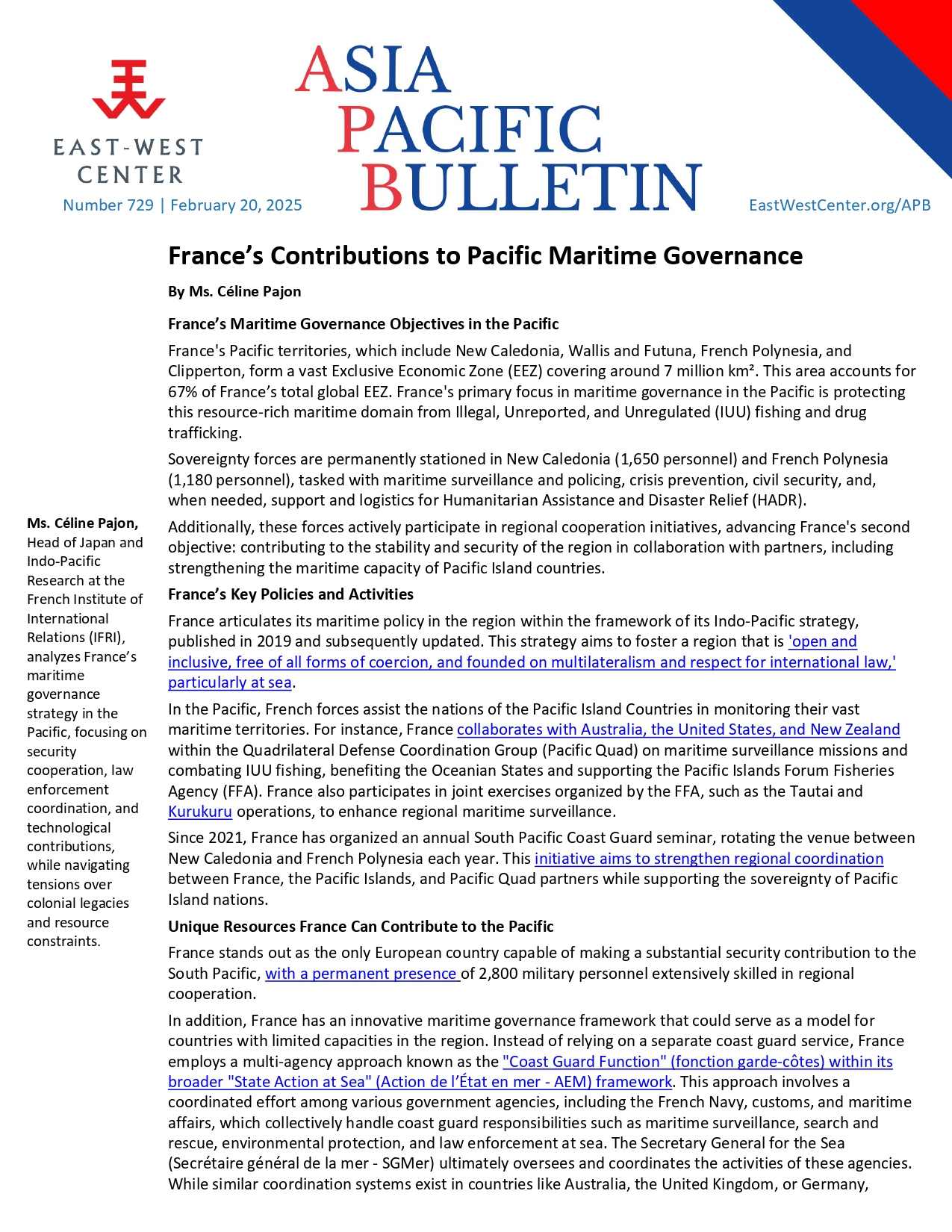Japan’s Coast Guard and Maritime Self-Defense Force: Cooperation among Siblings

Coping with “gray zone” situations has in recent years become the core security challenge for Japan. Since September 2012, Beijing has been challenging Japan’s sovereign control of the Senkaku Islands by regularly sending law-enforcement vessels into Japanese territorial waters and contiguous zones.

Beijing sends civilian or paramilitary forces to change facts on the ground while daring the targeted country to use force to stop these activities. These incursions, which do not amount to an armed attack, are blurring the line between crime and defense, law enforcement, and military activities.
In August, an armada of 230 Chinese fishing boats, accompanied by 7 Chinese Coast Guard (CCG) vessels, was spotted near the Senkakus. This could have led to a nightmare scenario for Tokyo in which the disputed islands are seized by Chinese armed fishermen. Such a situation could quickly escalate with the arrest of the intruders at sea by the Japan Coast Guard (JCG) or on land by the police forces, followed by the deployment of Chinese naval vessels to rescue its citizens. The Japan Maritime Self-Defense Forces (JMSDF) could then be deployed on site, on the request of the Cabinet Office, only with limited authorization to use force (law-enforcement powers). This chain of events would create a tense standoff between JMSDF and Chinese naval vessels with a high risk of developing into a military incident. The dilemma for Japan would be to choose between being the first side to use force to displace the intruders and leaving them alone with the risk of Beijing claiming actual control of the islands. In this kind of scenario, a clear division of roles between the JCG and JMSDF, with the early involvement of the latter, would ensure a greater deterrence effect and a swifter and consistent response in case of an intrusion.
This MAP Analysis is a preview of the author’s forthcoming article in the January issue of Asia Policy.

Available in:
Regions and themes
Share
Download the full analysis
This page contains only a summary of our work. If you would like to have access to all the information from our research on the subject, you can download the full version in PDF format.
Japan’s Coast Guard and Maritime Self-Defense Force: Cooperation among Siblings
Related centers and programs
Discover our other research centers and programsFind out more
Discover all our analysesJammu and Kashmir in the Aftermath of August 2019
The abrogation of Article 370, which granted special status to the state of Jammu and Kashmir (J&K), has been on the agenda of the Bharatiya Janata Party (BJP) for many decades.

France’s Contributions to Pacific Maritime Governance
France stands out as the only European country capable of making a substantial security contribution to the South Pacific, with a permanent presence of 2,800 military personnel extensively skilled in regional cooperation.
Unlocking India’s Energy Transition: Addressing Grid Flexibility Challenges and Solutions
India is rapidly scaling up its renewable energy (RE) capacity, adding 15–20 GW annually, but the ambitious goal of 500 GW of non-fossil capacity by 2030 is at risk unless the pace accelerates.

The China-Russia Partnership and the Ukraine War: Aligned but not allied
China and Russia maintain a strategic partnership rooted in shared opposition to the U.S. and liberal democracies, but their relationship is shaped more by pragmatism than trust.










